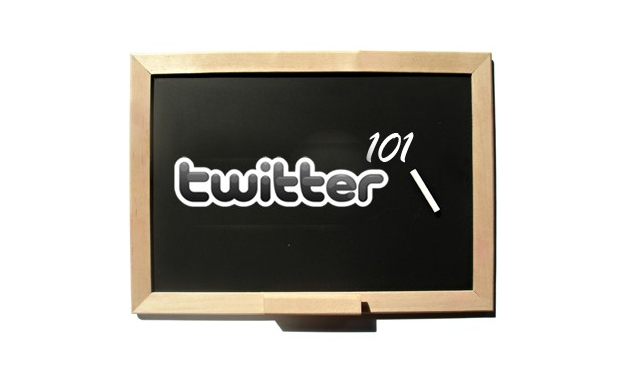
What Is A Tweet? – Twitter for Business 101
Part 1 of 5 in a series of blog posts on how to use Twitter for business. This post covers what is a tweet and explains its many parts.
 Tweets are the building blocks of your communications on Twitter. You’ll be surprised by how much you can say with 140 characters or less.
Tweets are the building blocks of your communications on Twitter. You’ll be surprised by how much you can say with 140 characters or less.
A tweet is an extremely powerful tool. Every week, billions of tweets flow through Twitter and cover about ever subject imaginable; from sports to science, and money to manufacturing, you can find a conversation about most anything on Twitter. A wide variety of people, organizations, businesses — big and small, local and international — all use Twitter to make their presence known and get their message out.
Your customers are already on Twitter; don’t miss the opportunity to be part of the conversation. I encourage everyone I meet to learn how to use Twitter effectively to meet not only your business goals, but personal as well. Twitter can help you and your company connect with customers, amplify your message, and ultimately, grow your presense.
Let’s break down “What is a tweet, and what are its many parts?” See the image and descriptions below:
1) Hashtag
A hashtag is any word beginning with the “#” sign. People use hashtags to organize conversations around a specific topic. Clicking on a hashtag takes you to search results for that term.
If you include a hashtag in your tweet, people who search for that hashtag will see what you tweeted. This puts your thoughts into context – it lets your followers and those browsing search results know that you want your tweet to be associated with a specific topic.
Not only can hashtags help you target a topic, but they can also help you target your audience, as well. If you are a freelance web designer, for instance, you might want to tag those tweets that contain tips for fellow designers with #webdesigntip. This will show your followers that you’re writing for a specific audience, and it will help them sort through the tweets that are relevant to them by searching for that hashtag.
People want to share content on Twitter, and if you’re producing great, insightful commentary that simply isn’t getting shared, it might be because you’re not entering your tweets in the right conversation using hashtags.
By searching out and utilizing relevant hashtags, you’ll put your tweets in front of an audience and topic that they mesh with, and this will naturally lead to more retweets and more engagement.
Using hashtags in your tweets can get you more retweets, and as a result more targeted followers. Using hashtags often and inteligently and are highly recommended.
2) Mention
Sometimes you want to bring a tweet to someone’s attention, but you still want all of your followers to see the message. So instead of a reply, use a mention. Include the @username (a.k.a. a “Twitter handle”) of whomever you want to mention in your tweet, and it will appear in the Mentions section (in the Connect tab). But remember, if you use their name at the beginning of a tweet, put a period in front of the Twitter handle if you want everyone to see it. (Why use a period? See my blog post, “Why Is There a Period Before My Twitter Handle?“)
All @username mentions are clickable and link back to the mentioned individual’s profile.
3) Reply
You can respond to a tweet by hitting the reply button. When you reply, your response is public, and will show up in your home timeline and the timeline of the person to whom you are responding. The reply will also be visible in the home timelines of people who follow both you and the person to whom you sent the reply. Meaning, someone not in the conversation has to follow both of the people replying to be able to read both sides of the conversation.
Side note: A direct message (DM) is a private message (kind of like a 140-character email via Twitter). You can only send a DM to individuals you follow who also follow you.
4) Retweet
When you scan your timeline and see a tweet that you want to pass along to your followers, you can pass along someone’s tweet by retweeting it. You can retweet someone’s message by just hitting the retweet button to send the original message to all of your followers.
Another way to retweet is to highlight the tweet, copy it to your clipboard, and paste it in the compose a tweet box. But do not forget to give them credit by putting “RT (stands for Retweet) @username” at the beginning of the tweet, or “via @username” at the end.
5) Links
Twitter’s link-shortening feature allows you to paste a link of any length into the compose a tweet box and it will automatically be shortened to 19 characters. This makes it easier to fit long URLs into the 140 character limit.
You should generally always include some sort of link in your tweet, whether it be to a URL, image, or video. Links show your followers that your tweet has value; people rarely have a positive opinion on tweets that lack any sort of link
-Lance Brown
—
Read part 2: How to Customize Your Twitter Profile
Read part 3: Five Easy Steps To Engage Your Audience
Read part 4: How to Get More Retweets
Read part 5: How to Get More Twitter Followers Organically




Pingback: How to Get More Twitter Followers - Twitter for Business 101
Pingback: How to Get More Retweets - Twitter for Business 101
Pingback: How to Engage Your Twitter Audience - Twitter for Business 101
Pingback: How to Customize Your Twitter Profile - Twitter for Business 101